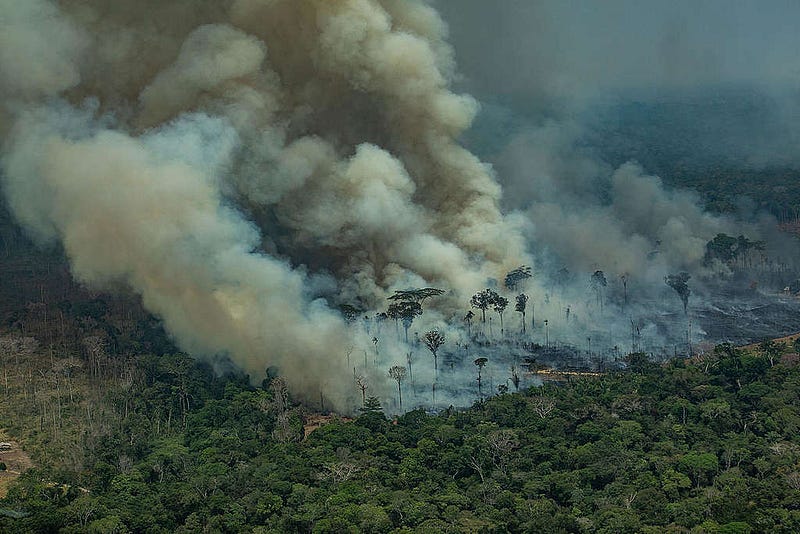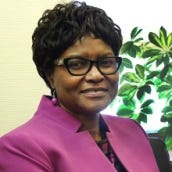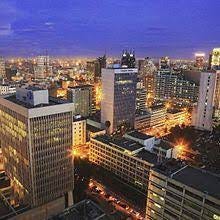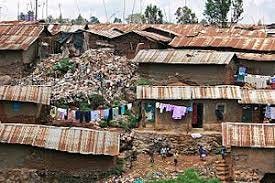Bankrolling destruction, calling it progress

A recent report from the World Bank (WB), officially called the International Bank for Reconstruction and Development, praises the mountain country of Bhutan for maintaining 70% of their land as forests. For three paragraphs, then they get to the point, all the money Bhutan could make if they just loosened up.
World Bank Country Director for Bhutan Mercy Tembon writes, “Fully applying the principles of sustainable forest management to Bhutan’s forests and modernizing the sector could significantly increase productivity and improve ecological resilience.” Tembon goes on to list the advantages “sustainable” forest cutting could bring. “It could increase employment opportunities,” she writes, “create forest-based enterprises and move to a market-based approach for trading timber and non-wood forest products.”

In other countries, “sustainable development” and “market-based approaches” turn forests into furniture and leave animals homeless, while accelerating global warming. It is more of what capitalism does, turning Nature into products to sell. That is how our world is being devoured piece by piece.
WB and their sister organization the International Monetary Fund (IMF) are well aware of the dangers of deforestation and industrial development. Tembon herself has written about it several times. They know what they are doing to the world, but they can’t think any other way. To capitalist economists, economic growth is the ultimate good. It makes people’s lives better, and nothing should get in its way, even the survival of life on Earth.
Tembon’s article reports that Bhutan is the only carbon-negative country in the world, meaning the only one that absorbs more carbon than it emits.
As the only country slowing global warming instead of accelerating it, Bhutan should be a model for the whole world, but the WB says they are doing it wrong. They should focus instead on raising their Gross Domestic Product (GDP) and opening their markets to exports and imports. That’s how the big boys get rich.
What are the World Bank and IMF?
The great capitalist banks and governments of the US and Europe joined in 1944 to form the WB and IMF to stabilize the global economy, keep it growing, and help poor countries export more stuff. WB consists of five related organizations that handle every area of international finance. They keep global capitalism going.
The WB and IMF have advised countries throughout the global South to focus on export-led economic growth for 70 years, advice backed up by threats of loan defaults and imposed structural adjustment programs (SAPs) that normally lead to more poverty in the targeted countries.
World Bank currently has 189 member countries. The WB proudly says it “helps more than 100 developing countries and countries in transition on issues ranging from climate change, conflict, and food security to education, agriculture, finance, and trade.” They say they focus on “development, with a heavy emphasis on infrastructure such as dams, electrical grids, irrigation systems, and roads.”
Becoming “sustainable”
In the 1970s, with the publication of studies such as The Club of Rome’s Limits to Growth, international bankers found they needed to address the ecological devastation development can cause. Before 1980, WB maintained environment and indigenous rights were somebody else’s problem.
Then, environmental catastrophes like the ones described below created massive pressure on bankers to move beyond “Growth at any cost.” They started talking about “sustainable development” meaning economic growth that didn’t kill the basis of its own existence.
Now WB talks about sustainability all the time. But what do they mean? According to the WB web site, “The three pillars of sustainable development are: economic growth, environmental stewardship, and social inclusion.” Nice list, but the first two points contradict each other. Economic growth past a certain point always conflicts with “environmental stewardship.”
As an indigenous leader told Robin Wall Kimmerer in Braiding Sweetgrass, “This sustainable development sounds like they just want to keep on taking and not giving back. Tell them they need to consider first how they will give to the Earth.”
Sustainable development in practice
The killing of the Amazon rainforest, the “lungs of the planet,” took off with a World Bank project to build highways through the forest. According to researcher Jose Castaneda of Pace University, the “Polonoroeste (Northwest project) in Brazil built a 1500 km road into the heart of the Amazon forest. The highway was designed to encourage the creation of new settlements and to open land for agriculture.” From 1981 to 1985, the World Bank disbursed nearly half a billion dollars, in support of Polonoroeste.
“The project caused enormous human suffering,” Castaneda writes. “Thousands of peasants, lured to the jungle by land development schemes, moved with their families under subsistence conditions. The peasants were subsequently joined by waves of city dwellers seeking escape from their urban plight. Conflicts with displaced native tribes developed, and faction wars, hunger, and disease ensued.”
Ironically, Polonoroeste was WB’s first attempt to include indigenous people and environment in their plans. But the project backfired. It brought millions who set the forest ablaze or cut it down, demonstrating that even well-intentioned infrastructure such as roads often leads to destruction. It’s what roads do; people will follow them to wherever they hope to make a living, however they can.
Mining
Another Amazon project, the Carajas Iron Ore complex, the world’s largest iron mine, was initiated in 1970 with a $304 million WB loan, which funded the construction of iron smelters and a 600-mile railroad to transport the ore to Ponta de Madeira, from where it is exported to the world. However, the project has also burned 58,000 square miles of Amazon forest in order to provide charcoal for the smelters and fuel for mining communities.
Mining is the opposite of sustainability. It is only about extracting nonrenewable “resources” from Earth. The wealth from the mines goes to the corporate owners, not the masses of people. But the WB funds mining in 24 countries. The projects, they say, “have contributed to an increase in investment in the mining sector and related economic indicators such as exports, fiscal revenues and gross domestic product (GDP) in recipient countries.” See? Exports and GDP grow, and that’s good, no matter what happens to Nature.
Electric power generation
Generating electricity is a big part of WB’s development strategies. They fund hydroelectric dams such as the Singrauli Power Plant in India. “This project was part of a large industrialization plan approved by the World Bank for a region which only two decades ago provided a safe habitat for a wide variety of animal species,” writes Jose Castaneda. “This is no longer the case due to the constant influx of settlers and entrepreneurs.”
“The project itself is a source of pollution because ash emissions from the thermal plant are spread over the area. Airborne ash has caused floods, and has so encrusted the soil that agriculture is almost impossible.” As indigenous people have tried to defend their land, they have been set upon by armed forces moving them out, much as happens with pipeline projects here.
Coal-burning power plants
While claiming to oppose climate change, WB funds some of the world’s largest coal-burning generators. Environmental lawyer Bruce Rich wrote on Open Democracy.net that “World Bank policy statements and press releases show that the Bank’s coal finance binge took place even as it was simultaneously managing many billions of extra funding that donor nations gave to it fight climate change.”
The Tata Mundra coal plant in India, is one of the world’s top 50 greenhouse gas emitters and devastates the local environment. Rich writes, “Affected local communities maintained that project negligence resulted in the contamination of drinking and irrigation water of local farm communities, causing severe harm to fisheries and fisherfolk and adversely affecting public health through air pollution and inducing involuntary economic and physical displacement.”
Another giant coal plant, Medupi in South Africa, will be the 3rd largest coal powered generator in the world when it comes on line, pumping out greenhouse gases. There have already been explosions and water contamination.
Mechanized large-scale farming
WB also “reforms” and “modernizes” agriculture in low income countries. In practice, this means bigger fields farmed with machines such as tractors and planes and petrochemical fertilizers and pesticides. They may get higher yields for a while, but they displace millions of small peasants and farmworkers, driving them to crowded slums or sometimes to suicide. They also pollute surrounding water and make the land progressively less productive.
Do they reduce poverty?
WB and IMF say their mission is to bring people out of poverty, preferably in a sustainable way. But do they do that? While their loans create great wealth for some, do the people benefit?
Some obviously do benefit. The owners of mines and shipping companies, industrial farms and electrified factories get richer. Some middle-class people get good jobs. Life starts to look more like it does in the North, with people driving around and working in steel framed office buildings.

But most people in the South do not share in this wealth. Their countries sink deeper into debt paying for development projects that only ship the country’s natural wealth to the North. Meanwhile, their environments start to look like giant shanty towns or wastelands.

The IMF plays bad cop to the WB’s good cop. WB will offer big loans for development projects and help with the planning process, but when the loans cannot be repaid, the IMF is called in to wring every dollar they can out of a “developing” economy through their structural adjustment plans (SAPs).
SAPs involve massive cuts in social programs. Since COVID, the IMF has imposed SAPs on many countries to “help them” pay back the loans they needed after pandemic shutdowns wrecked their economies. The result has been health care systems collapsing when they are most needed.
The World Bank must go
I believe most people working for WB have good intentions. They want to reduce poverty, but they are locked into the belief that economic growth solves all problems. The Organisation for Economic Co-operation and Development,(OECD) — the rich countries — Department of International Development says, “A successful strategy of poverty reduction must have at its core measures to promote rapid and sustained economic growth.”
Rapid and sustained growth is what cancer does. It kills the host. Growth-centered thinking dominates the WB, IMF, and other multi-national lenders. They can’t think any other way. A page into the OECD report, they mention the need to grow “sustainably” with good management techniques. No specifics are given, because rapid sustainable growth is a contradiction in terms, no matter how many environmental buzz words you throw in.
Can the WB be saved? Their own studies show it could. A recent study on protected areas in four countries demonstrated that investment in conservation “generates positive economic returns, creates income multipliers, and provides practical green recovery options.”
So, maybe WB and IMF could transform themselves to invest in Nature. Except that they are run by bankers who believe in economic growth with every fiber of their being. They are funded by rich governments that Karl Marx called the “managing committees of the capitalist class.”
So they won’t change. We need to tear them down. Then we can think about a replacement Natural Bank, one that focuses on restoring Earth, not ripping it apart and calling it progress.
— — — — — — — -
Thanks for reading! Please comment, share, or steal. Follow me on Twitter, on Facebook or on Medium.com Hire me for freelancing, editing, or tutoring on Linked In

Coming from a Canadian forestry-supported community, I observe well-rooted locals accomplishing sustainable logging as they have for generations (and aiming to do so for generations to come), whereas I have seen no consistent sign of such from multinational nor national corporations in my region at large, let alone top-down meta-capitalist organizations. Granted means of cross-language communication, resource-dependent communities ourselves, and especially indigenous people, could exchange more effective sustainability tactics, certainly more altruistically than IMF/WTO. I remember reading a long-winded IMF proposal for Laos (communist with a low GDP, a thriving anarcho-syndocalist bartering economy, and common subsistence agriculture). The main proposal was that Laotians cease consuming their own domestic rice crop — in order to export it, then buy rice back. Economic activity itself, incoporating less-capitalist countries into the madness, is the only reliable outcome of meta-capitalist interference.